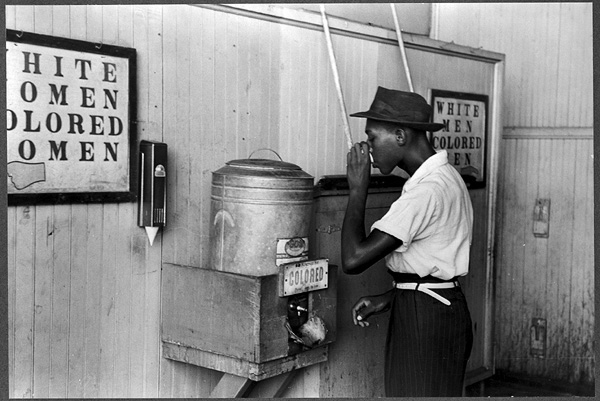From The Nation Magazine, "Jackie Robinson, Trayvon Martin and the Sad History of Sanford, Florida," by Dave Zirin on March 23, 2012 -- Sanford, Florida is a city that will now be known for all times as the place where Trayvon Martin was killed for the crime of Living While Black. It's in addition the place whose institutions—the police department, the local press, and even the city morgue—treated Trayvon and his body in ways that should disturb anyone with a shred of conscience.
The city of Sanford also has a past that speaks to the racism many believe to be at the heart of why Trayvon was killed and why the man who pulled the trigger was not arrested. I'm not arguing that Sanford, Florida, is somehow more or less twisted than anywhere else. Last month, unarmed, 18-year-old Ramarley Graham was killed in his bathroom by police in New York City. Last week Dane Scott Jr. in Del City, Oklahoma, was killed by police after a “scuffle.” The state medical examiner's office, however, declared Scott's death a homicide. The murder of Trayvon Martin is a “local issue” only if we understand “local” to mean local communities across the country.

But Sanford, Florida, does have its own history and it includes a collective moment of intolerance and bigotry that almost derailed the man Martin Luther King Jr. called “a freedom rider before freedom rides,” Jackie Robinson.
Before Robinson broke Major League Baseball’s color line in 1947 as a member of the Brooklyn Dodgers, he spent a season desegregating the minor leagues, playing for the Dodgers AAA team, the Montreal Royals. The Royals held Spring Training in Sanford.
Dodgers general manager Branch Rickey, after so many years, thought he knew Florida. He believed that Robinson’s presence could go over if efforts were taken to ruffle as few feathers as possible. Robinson, on Rickey’s instructions, didn't try to stay at any Sanford hotels. He and his wife didn’t eat out at any restaurants not deemed “Negro restaurants." He didn't even dress in the same locker room as his teammates.

Rickey thought that would be enough. He thought he knew Florida. But he didn't know Sanford.
As Jean West, a school teacher in Florida, wrote, "Branch Rickey had miscalculated the degree to which Jim Crow was entrenched in Sanford. As an example, an inanimate object, a second-hand piano, purchased in 1924 from the courthouse for use in a segregated school in nearby Oviedo, was filed as a 'Negro Piano' in the school board's record; living human beings challenging segregation certainly would not be tolerated."

It wasn't. The mayor of Sanford was confronted by what the author describes as a "large group of white residents" who "demanded that Robinson...be run out of town."
The Mayor caved. On March 5th, the Royals were informed that they would not be permitted to take the field as an integrated group. Rickey was concerned for Robinson’s life and sent him to stay in Daytona Beach. His daughter, Sharon Robinson, remembered, "The Robinsons were run out of Sanford, Florida, with threats of violence."
This was a low moment for Jackie. The man whose number, 42, is retired throughout Major League Baseball almost quit and rejoined the Negro Leagues.

The team then took an extraordinary step. As the late tennis star Arthur Ashe wrote in A Hard Road to Glory, Rickey, ''moved the entire Dodger pre-season camp from Sanford, Florida, to Daytona Beach due to the oppressive conditions of Sanford.'' That sounds heroic and it speaks well for Rickey's fierce desire to forge ahead with “the Great Experiment,” racists be damned. But the mob in Sanford had made, at least for the moment, a successful stand. In cites and small towns across the South, Jackie Robinson’s mere presence provoked challenges to power and provoked real, meaningful change. In Sanford, change did not come that easily.
What does this tell us? Maybe nothing, maybe everything. If nothing else, the line between Jackie Robinson and Trayvon Martin points to how institutional and systemic racism actually is. We might have short memories, but institutions change only when they are confronted and challenged. In Sanford, racist institutions took root. Now we bear the horrifying fruit. [source: The Nation Magazine]

No comments:
Post a Comment